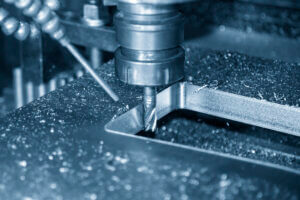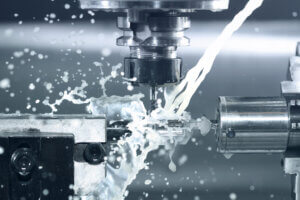Mills vs Lathes
In the world of manufacturing, choosing the right machine tool can mean the difference between success and costly mistakes. Mills and lathes are two of the most commonly used machines in the industry, but their uses and benefits are often misunderstood. We will explore the basic differences between mills and lathes, helping you consider which one is best suited for your manufacturing needs.
What is a Mill?
A mill typically uses a cutting tool to remove material from a stationary piece of work, which allows for the creation of unique shapes and complex designs. Mills are ideal for creating slots and holes as they can handle tasks ranging from simple drilling to detailed shaping. Milling machines often have a more compact footprint compared to lathes, enabling companies to install them in limited spaces within their facilities. The tools used in mills usually have multiple blades or points, and are spun at high rates of speed by a spindle, allowing the machine to remove the material from the workpiece very smoothly and efficiently. Mills usually require additional clamping to secure the material in place.
Advantages of Using a Milling Machine:
- Versatility – Ability to cut horizontally or vertically
- Fast Speed – Removes material at a high rate
- Smooth Surface Finishing – Multi-cutting edges
What is a Lathe?
A lathe is a type of machine that rotates a workpiece on an axis to perform a variety of different procedures including, turning, drilling, threading, knurling, etc.. Lathes are best at creating cylindrical and round objects. Lathes are great for producing complex parts very quickly by rotating the piece against a single blade cutting tool. They typically have high torque and speed control which allows for high precision and accuracy. A lathe can be joined to a bar feeder which provides a simple and efficient automation solution. Some modern lathes feature a y-axis and live tooling, allowing the operator to turn and mill on the same machine, for the best of both worlds!
Advantages of Using a Lathe:
- Shape – Great for producing round parts
- Automation – Simple to add a bar feeder
- Versatility – Turning, drilling, tapping, threading, knurling, and boring
Key Differences Between Mills and Lathes
- Lathe parts are held by a spinning chuck while the cutting tool is stationary. Mill parts are stationary and are cut by a spinning, rotating cutting tool.
- Mills create precision grooves and sharp corners on flat or irregular surfaces, whereas lathes are typically used for manufacturing round or cylindrical shaped parts, such as bolts, nuts, and knobs.
- Mill cutting tools have multiple blades or points. Lathe cutting tools usually have a single blade.
- Mills typically move in three directions (X,Y,Z Axis), Lathes only move in two (X,Z Axis).
When to Use a Mill vs. a Lathe
Use a Mill: When you need to create complex shapes, slots, and flat surfaces.
Use a Lathe: When your project involves cylindrical components or requires precise roundness and symmetry.
Understanding the capabilities of both mills and lathes is very important before starting any machining project. You can reach your business’s full potential by selecting the right machine and utilizing its benefits correctly. Here at Productivity, we can help you discover what machine would be best for your unique business needs. Contact MachineSales@productivity.com to learn more about the opportunities CNC machining can provide you. Shop for the top-of-the-line CNC machines with us today.

